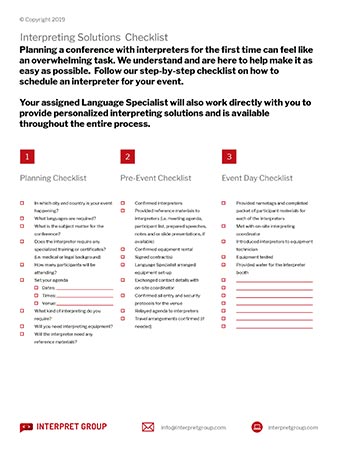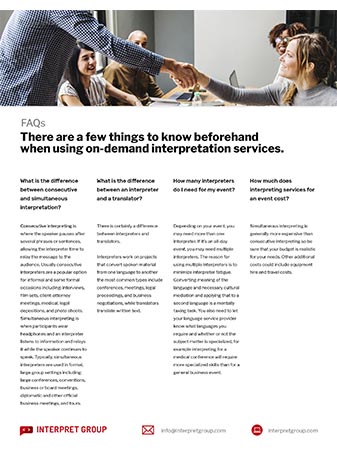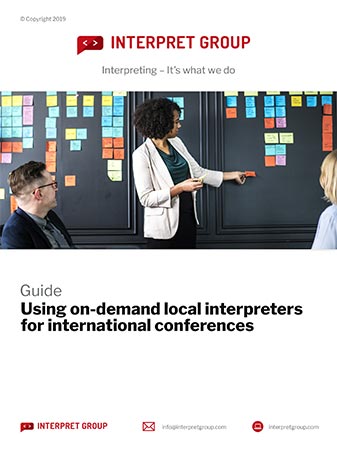Imagine tuning into a major conference or watching a live broadcast, only to realize you can’t follow what’s being said. Maybe it’s because you can’t hear it. Maybe the language is unfamiliar. Maybe you’re in a noisy space, or you simply process information better by reading. Whatever the reason, you’re suddenly on the outside looking in.
The European Accessibility Act (EAA) is changing that.
The EAA took effect on June 28. 2025, setting a new legal baseline for how products and services across the EU must be designed and delivered. From public websites and e-commerce platforms to audiovisual media and transportation booking systems, the EAA is requiring industries to make their products and services fully accessible to people with disabilities, removing any barriers they may face. That includes how we communicate, especially in live events and digital media.
Organizations and businesses will need to meet the requirements of the new European Accessibility Act. But this isn’t just a compliance deadline, it’s an opportunity to rethink how we create events, content, and conversations that are truly inclusive. At Interpret Group, we’re here to help you make that shift.
Why the EAA Directive is Better for Communication
For event organizers and content creators, there’s a crucial part of the EAA that truly shines. It calls for accessibility in audiovisual media, allowing everyone to fully enjoy what you offer. This means integrating features like:
- subtitles for the deaf or hard of hearing;
- audio descriptions;
- spoken subtitles (audio voice-overs of text); and
- sign language interpretation.
These features must be accurate, properly synchronized with the content, and under user control. In practice, this means services like closed captions and sign language interpreting are no longer optional add-ons, but compulsory elements of inclusive design.
While the two are sometimes viewed as interchangeable, they serve different needs and support different types of users. Let’s dive into how each tool enhances accessibility under the EAA and discover why combining them creates a powerful strategy for events, media, and digital platforms aiming to reach and respect every audience.
Twin Tools for Accessibility
The European Accessibility Act emphasizes that accessibility is not one-size-fits-all. To meet the needs of diverse audiences, organizers must think in layers. Two of the most effective tools are closed captions and interpreting, not as alternatives, but as complementary services that support different users.
Closed Captions
Closed captions convert spoken content and important sound cues into on-screen text, allowing deaf and hard-of-hearing viewers to follow along. They convey spoken dialogue as well as essential sounds (like [applause] or [door creaks]). Under the EAA, they are now mandatory for nearly all public-facing audiovisual content, including live events, webinars, and pre-recorded videos. Tools like CART (Communication Access Realtime Translation) are commonly used to ensure real-time captioning for live sessions.
While essential for those with hearing impairments, closed captions also benefit people in noisy or sound-sensitive environments, non-native speakers, and individuals who process information better through reading. They provide clarity, improve comprehension, and make content more accessible to a wider audience.
Interpreting (Spoken and Sign Language)
Interpreting, on the other hand, delivers spoken content in another language, either a different spoken language or a visual one, like sign language. The EAA explicitly requires sign language interpretation for public-facing content where deaf sign language users are present. Live interpreters convey not just words, but also tone and emotion, offering a richer and more natural experience for sign language users.
Spoken-language interpreting is not required under the EAA but remains a powerful tool for inclusion, especially in multilingual events. Offering interpretation in languages like French, German, or Spanish may not be a legal obligation, but it breaks down language barriers and demonstrates a deeper commitment to accessibility.
Each modality meets distinct needs. Some deaf individuals rely on sign language as their first language. Others, especially those who lost hearing later in life, may prefer reading captions. And multilingual participants may need spoken interpretation to follow the event at all.
The most inclusive approach is to provide both closed captions and sign language interpreting whenever possible. Together, they help ensure that everyone—not just some—can fully engage with your content. That’s not just EAA compliance. That’s real accessibility.
Penalties for Non-Compliance
The EAA makes accessibility a legal obligation for digital and live content. Organizations that neglect these requirements face serious repercussions. Broadly, non-compliance can lead to:
- Fines up to €250,000 and possible criminal charges for willful non-compliance
- Civil lawsuits from individuals or advocacy groups for denied access
- Daily fines, service suspensions, or license bans in severe cases
- Reputational harm from public backlash, lost trust, and negative visibility
Clients and audiences today are paying attention. Choosing not to invest in accessibility doesn’t just risk legal action. It signals that some people’s participation matters less. In the long run, the cost of inaction far outweighs the cost of getting it right. Accessibility grows your reach, while inclusion builds lasting trust.
Accessibility Is a Commitment, Not a Checkbox
Choosing both closed captions and interpreting is not just about checking off a requirement. It is about making a statement that everyone belongs.
At Interpret Group, we help organizations design events and content that are truly inclusive. From closed captions to sign language and multilingual interpreting, we provide the tools and expertise to ensure that your message reaches every participant.
Contact our team today to build a strategy that combines human precision with thoughtful accessibility.









